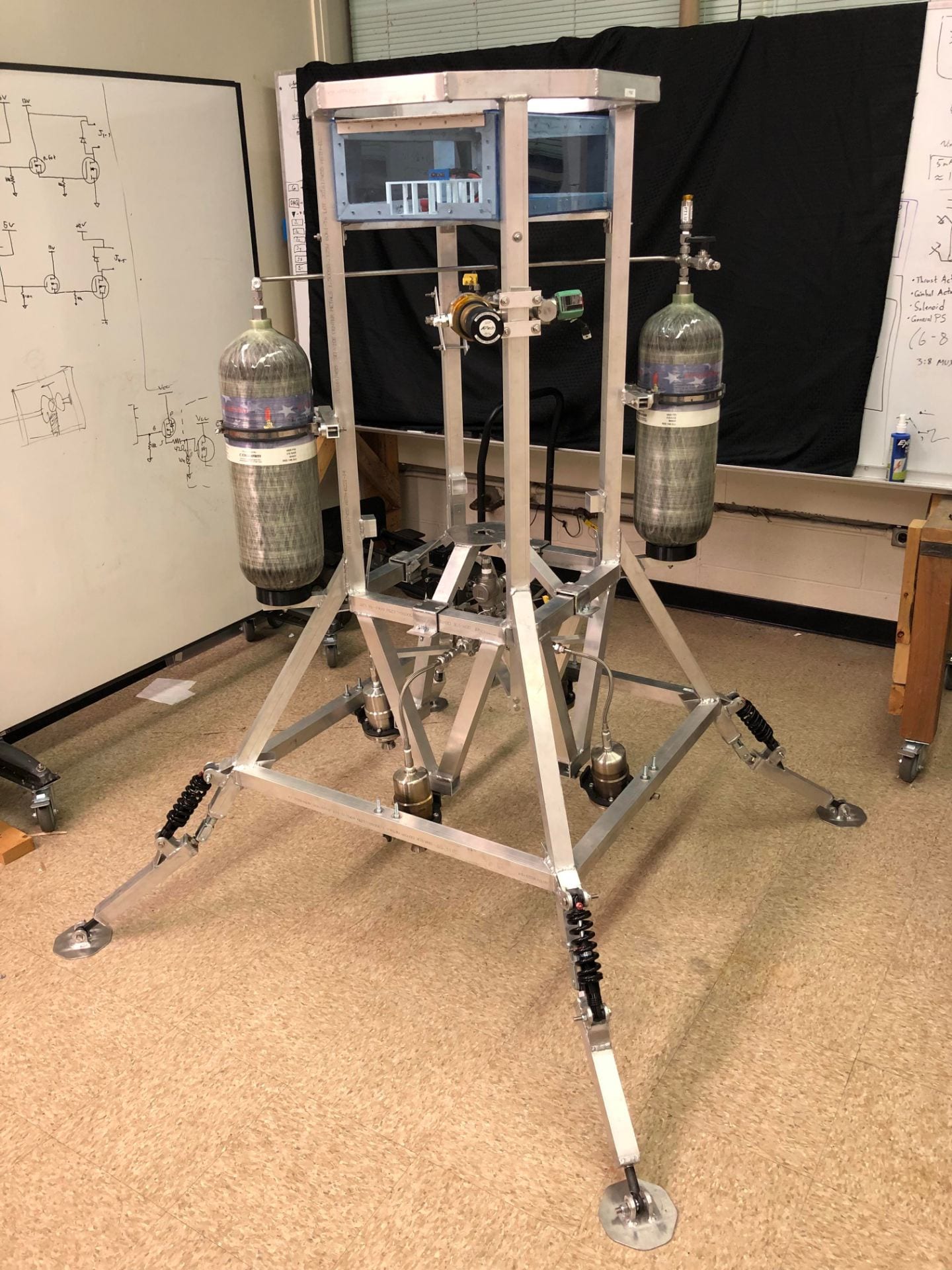Lynx
Lynx is Lunar Lion’s second prototype lander vehicle. It has been designed to ultimately fly completely unconstrained and autonomously. Lynx will act as a test-bed for the team to refine the controls software that will allow the craft to operate with minimal human interaction. Given vague directions such as a height to hover at or a GPS coordinate to fly to, Lynx will need to use its on-board sensors to figure out the rest on its own. This level of autonomy is what will be needed for an attempted lunar landing in the future.
Technical Specifications
- 4 – Stainless Steel HTP Rocket Engines
- Utilizes monopropellant hydrogen peroxide engines (Max Thrust: 100 lbs each)
- Each gimbaled in one axis to allow for roll, pitch and yaw control
- Welded 6061 Aluminum structure
- Includes 4 landing legs with shock absorbers capable of withstanding moderate impacts
- 2 – Raspberry Pis
- One running C&DH(link to C&DH page)’s flight software
- One running GNC(link to GNC)’s control algorithm
- 8 – Hitecnology SG33 high speed, high torque servos
- One set throttles each of the four rocket engines
- Other set of four gimbals the engines
Future Development
- Static Test Campaign:
Lynx’s first tests will be performed with the vehicle pinned to a box, not allowing it to move. These tests will verify all parts of the system are operating correctly and will provide vital data needed to fly in the future.
2. Vertical Flight Campaign:
The next campaign will allow Lynx to only move in one axis, up and down, while constrained by guide cables. This will allow the team to refine Lynx’s altitude control software: the algorithm which will need to balance the craft’s changing weight with the thrust produced by it rocket engines.
3. Hanging Test Campaign:
Hung from above, Lynx’s attitude control software will now begin to be tested and refined. This is what will ultimately allow the craft to fly freely. These tests will verify the craft is able to control itself in 3 axes without the possibility of any damage occurring.
4. Free Flight:
The culmination of Lynx’s development will be a fully autonomous free flight. The craft must be able to fly with no constraints and no human interaction. This will be a tremendous milestone on the path to preparing a spacecraft to land on the moon.

